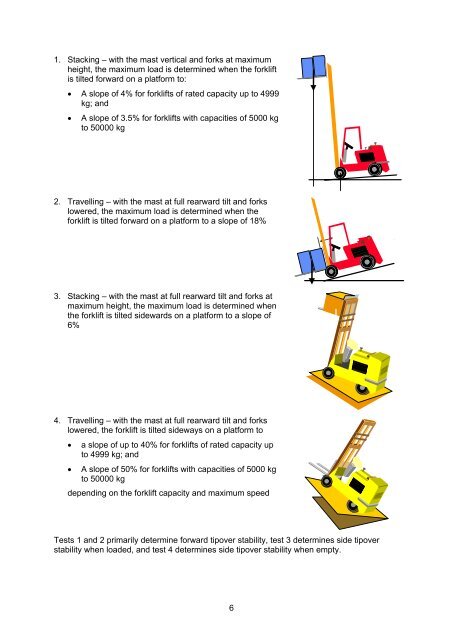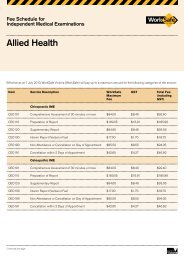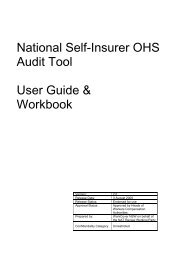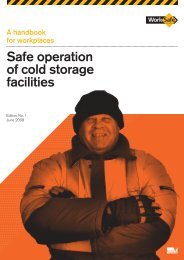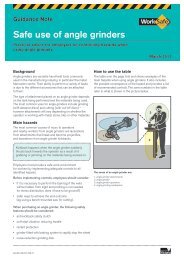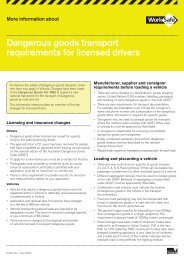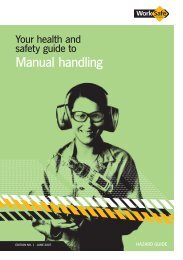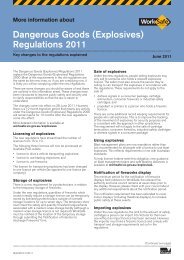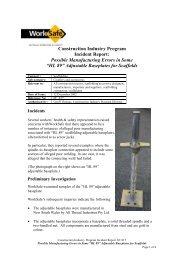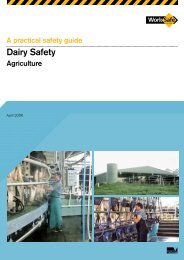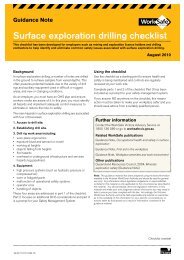Forklift stability and other technical safety issues - Monash University
Forklift stability and other technical safety issues - Monash University
Forklift stability and other technical safety issues - Monash University
You also want an ePaper? Increase the reach of your titles
YUMPU automatically turns print PDFs into web optimized ePapers that Google loves.
1. Stacking – with the mast vertical <strong>and</strong> forks at maximumheight, the maximum load is determined when the forkliftis tilted forward on a platform to:• A slope of 4% for forklifts of rated capacity up to 4999kg; <strong>and</strong>• A slope of 3.5% for forklifts with capacities of 5000 kgto 50000 kg2. Travelling – with the mast at full rearward tilt <strong>and</strong> forkslowered, the maximum load is determined when theforklift is tilted forward on a platform to a slope of 18%3. Stacking – with the mast at full rearward tilt <strong>and</strong> forks atmaximum height, the maximum load is determined whenthe forklift is tilted sidewards on a platform to a slope of6%4. Travelling – with the mast at full rearward tilt <strong>and</strong> forkslowered, the forklift is tilted sideways on a platform to• a slope of up to 40% for forklifts of rated capacity upto 4999 kg; <strong>and</strong>• A slope of 50% for forklifts with capacities of 5000 kgto 50000 kgdepending on the forklift capacity <strong>and</strong> maximum speedTests 1 <strong>and</strong> 2 primarily determine forward tipover <strong>stability</strong>, test 3 determines side tipover<strong>stability</strong> when loaded, <strong>and</strong> test 4 determines side tipover <strong>stability</strong> when empty.6


